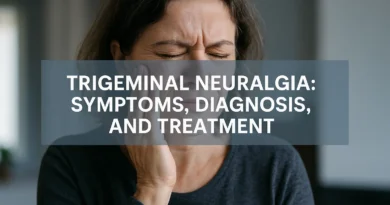Antibiotic Resistance Explained: Causes, Risks, and What You Need to Know
Antibiotics rank among the most valuable discoveries in modern medicine. Since penicillin was discovered by Alexander Fleming in 1928 and later introduced in the 1940s, this antibiotic has saved millions of lives by effectively treating bacterial infections that previously claimed many victims. However, today we face an urgent global health crisis—antibiotic resistance. This issue makes infections that were once easy to treat more difficult, and sometimes nearly impossible, to cure.
In this article, we’ll explain what antibiotic resistance is, why it occurs, how it impacts everyday infections, and what can be done to address this escalating problem.
What is antibiotic resistance?
Antibiotic resistance occurs when bacteria become insensitive and develop the ability to survive exposure to antibiotics that are supposed to kill them. Unlike viral or fungal resistance, this specifically involves bacteria becoming “superbugs,” which means that they no longer respond to standard treatments.
For example, infections like urinary tract infections (UTIs), pneumonia, or skin infections that were once treated with a short course of antibiotics may now require stronger medications, longer treatment durations, or even hospitalization. In severe cases, no antibiotic is effective at all.
Antibiotic resistance occurs when bacteria themselves change, adapt, and survive, not because the human body becomes resistant.
How do bacteria become resistant to antibiotics?
Bacteria adapt and develop resistance in many ways; these include:
- Genetic mutations—Mutations cause random changes in the DNA structure that can make them resistant to an antibiotic’s effects.
- Acquiring resistance genes– Genes that become resistant can transfer between Bacteria through plasmids (small DNA fragments).
- Selective pressure—Sometimes, with the overuse and misuse of antibiotics, sensitive bacteria are killed while bacteria with resistant genes can survive and multiply.
What are the causes of antibiotic resistance?
Several factors can make the common infections harder to treat, contributing to antibiotic resistance. These include:
1. Overuse or misuse of Antibiotics
People who often self-medicate, and in case the antibiotics are prescribed when they aren’t needed, for viral infections like colds or flu. Since antibiotics don’t kill viruses, they don’t benefit the patient, and their misuse can make your body resistant to antibiotic drugs.
2. Incomplete Antibiotic Courses
Many people stop taking antibiotics before completing the recommended course of treatment as soon as they feel better. This leaves some bacteria alive, allowing them to adapt and survive future treatment.
3. Use of Antibiotics in Agriculture
Antibiotics are used in many countries to promote growth and prevent disease in livestock, poultry, and aquaculture. Humans may be exposed to these resistant bacteria through the food chain, which increases the risk to human health.
4. Poor Infection Control
The drug-resistant bacteria can spread quickly in hospitals, clinics, and communities, affecting patients with weakened immune systems and posing a health risk.
5. Limited antibiotic development
Antibiotic research is often avoided by pharmaceutical companies because it is more expensive, time-consuming, and less profitable than drugs for chronic conditions, resulting in slower development and a lack of new antibiotics.
Who is at high risk of antibiotic-resistant infections?
Antibiotic resistance can affect anyone, regardless of age or gender; however, certain groups remain at higher risk due to changing environments and underlying health conditions.
- Early-born infants
- Adults over 65 years of age
- People living in crowded or unhygienic conditions may have a higher risk of getting resistant bacteria.
- People with weak immunity
- Long-term antibiotic intake
What are the most prevalent antibiotic-resistant bacteria?
Here’s a list of drug-resistant infections linked to the bacteria that cause the most deaths.
- MRSA (Methicillin-resistant Staphylococcus aureus)—This bacterium causes infections of the skin, wounds, and bloodstream that are often difficult to treat.
- Treatment for drug-resistant tuberculosis (TB)- It can take months to years and involves costly and harmful medication combinations.
- Resistant Urinary Tract Infections (UTIs)—Commonly caused by E. coli that no longer respond to standard antibiotics.
- Gonorrhea—Once easily treated with penicillin, gonorrhea now exhibits resistance to nearly every antibiotic on the market.
- Carbapenem-resistant Enterobacteriaceae (CRE) – Known as “nightmare bacteria” because of their resistance to almost all antibiotics.
These examples highlight how infections we once considered routine are becoming life-threatening challenges.
How to Combat Antibiotic Resistance?
Addressing antibiotic resistance requires a coordinated, multi-level strategy that engages individuals, healthcare providers, policymakers, and the agricultural industry. Here are some of the tips to counter this, including
For Individuals:
- Antibiotics should only be taken as prescribed by a qualified healthcare provider.
- Even if you feel better, you should complete the entire course of treatment.
- Never self-medicate or reuse antibiotics.
- Washing hands on a regular basis helps to reduce the spread of infections.
- Stay vaccinated to avoid infections that would otherwise necessitate antibiotics.
For Healthcare Professionals:
- Antibiotics should be prescribed only as needed.
- Before beginning treatment, perform diagnostic tests to confirm bacterial infections.
- Inform patients about the dangers of antibiotic resistance and appropriate usage.
- In hospitals and clinics, infection control measures must be strictly followed.
For Agriculture and Food Production:
- Reduce or eliminate the routine use of antibiotics to promote animal growth.
- Improve animal health practices, such as hygiene and vaccinations.
- Improve monitoring of antibiotic use in the food industry.
For Policymakers and Governments:
- Invest in research and development of new antibiotics and alternative treatments.
- Encourage efforts to raise awareness of the risks of misuse.
- Improve surveillance systems to identify resistance patterns.
- Put stronger restrictions on the use and sale of antibiotics into effect.
The Global Impact of Antibiotic Resistance
Antibiotic resistance is one of the top ten global public health threats, according to the World Health Organization (WHO). Here’s why:
- Increased mortality—According to a global study published in The Lancet in 2019, antibiotic resistance was responsible for nearly 5 million deaths.
- Long Hospital stays— Healthcare systems are strained when patients with resistant infections need prolonged treatment.
- Higher medical costs—Stronger antibiotics, specialized treatments, and longer recovery times raise costs.
- Threat to routine procedures—Antibiotics are essential for preventing infections during surgeries, cancer treatments, and organ transplants. Resistance increases the risk of these procedures.
How do healthcare providers treat antibiotic-resistant bacteria?
Treating antibiotic-resistant infections is challenging, but healthcare providers use several strategies:
- Using alternative antibiotics—If one drug fails, doctors may prescribe other, equally effective antibiotics.
- Combination therapy—two or more antibiotics can be taken together to increase efficacy.
- Higher or longer doses- In certain cases, stronger dosages or longer treatment periods may be required.
- Supportive care—treatments to relieve symptoms, prevent complications, and boost the immune system.
- New and advanced therapies—such as phage therapy, immunotherapy, and novel antibiotics—are currently under investigation.
- Infection control measures- Include strict hygiene, isolation (if necessary), and preventative measures to stop the spread.
Early detection and appropriate medical guidance are essential. Self-medicating or misusing antibiotics worsens resistance, so treatment should always be managed by a healthcare professional.
Future Solutions of Antibiotic Resistance
Since creating new antibiotics is difficult and time-consuming, scientists are investigating alternative strategies like
- Phage therapy uses viruses to specifically attack bacteria.
- Antimicrobial peptides are naturally occurring proteins that are capable of killing bacteria.
- Microbiome treatments and probiotics help reestablish beneficial bacteria to outcompete detrimental ones.
- Rapid diagnostic tests allow doctors to quickly identify bacterial infections and select the appropriate treatment.
- Vaccines prevent bacterial infections, which require fewer antibiotics.
These innovations show promise, but they require significant investment and international collaboration.
Table: Global Antibiotic Resistance prevalence data 2025
| Bacterium / Resistance Type | Global Prevalence/Rate | Source |
| MRSA (Methicillin-Resistant Staph. aureus) | ~35% median prevalence across 76 countries; ranges between 7–60% (GlobeNewswire). | GLASS 2022 |
| MRSA colonization in elderly care homes | Pooled global prevalence: ~14.7% (95% CI: 12.4–17.2%) (BioMed Central). | Meta-analysis |
| 3rd gen cephalosporin-resistant E. coli | ~64.5% in 2015 globally; projected to increase to ~77% by 2030 (PMC). | Forecast data |
| Carbapenem-resistant E. coli | ~5.8% in 2015; estimated to rise to ~11.8% by 2030 (PMC). | Forecast data |
| 3rd-gen cephalosporin-resistant Klebsiella pneumoniae | ~66.9% in 2015 globally; projected to decline slightly to ~58.2% by 2030 (PMC). | Forecast data |
| Carbapenem-resistant Klebsiella pneumoniae | ~23.4% in 2015; projected to rise sharply to ~52.8% by 2030 (PMC). | Forecast data |
| CRKP (hospital-acquired infections) | Global pooled prevalence: ~28.7%; highest in South Asia, ~66%, and China (~19.6%); ICU rates up to 62.3% (PMC). | Systematic review |
| CRKP colonization | Overall global colonization: ~5.4%; Asia pooled: ~4.6%; Europe: ~6.2%; Americas: ~0.3%; Africa: ~0.07% (PMC). | Meta-analysis |
| Hypervirulent K. pneumoniae with carbapenem resistance (hvKp ST23) | Detected in 16 countries across all six WHO regions (World Health Organization). | WHO GLASS-EAR |
- MRSA has a global prevalence of around 35% and a colonization rate of about 15% in elderly care homes.
- Since 2015, E. coli and K. pneumoniae have shown more than 60% resistance to third-generation cephalosporins, and rates are expected to rise further by 2030.
- Carbapenem resistance in Klebsiella is increasing, with more than half of global infections expected to be resistant by 2030.
- Hospital-acquired CRKP is most prevalent in South Asia and ICUs, with infection rates ranging from 20% to 60% or higher.
- Colonization is less common than infection, but it can lead to severe, difficult-to-treat cases.
- New HvKp ST23-resistant strains are emerging in healthy individuals, indicating that the virus is spreading beyond hospitals.
Table: Antibiotic Resistance Prevalence in India 2025
| Pathogen / Context | Resistance Rate & Context | Source |
| E. coli – Community & Clinical Isolates | In 2008-2018, resistance to ampicillin was around 75%, nalidixic acid was around 73%, and co-trimoxazole was around 59%. Resistance to third-generation cephalosporins increased from 71% to 88%, fluoroquinolones from 83% to 89%, and carbapenems from 9% to 41%. | (PMC) |
| UTI isolates—South India (E. coli) | Ampicillin: 81–96%; cotrimoxazole: 60–85%; gentamicin: up to 77%; ciprofloxacin: up to 84%; cephalosporins (ceftazidime/cefotaxime): 62–92%; imipenem: 32–38%; meropenem: 38%; piperacillin-tazobactam: 71% | (PMC) |
| Multicentric UTI data – India | Significant increase in resistance between 2011 and 2017: imipenem (+29.8%), meropenem (+18.3%), ertapenem (+24.9%), ciprofloxacin (+26.5%), nitrofurantoin (+11.2%), amikacin (+8.7%), cefotaxime (+7.4%) | (PubMed) |
| E. coli – Regional susceptibility | Only 49% susceptibility to co-trimoxazole nationally; ciprofloxacin susceptibility ~29%; third-gen cephalosporin susceptibility ~46.3%; Western India higher (cefepime susceptibility 78–91%) | (PMC) |
| MRSA – Community-acquired | ICMR sentinel OPD data (2020): MRSA prevalence is ~38% among S. aureus isolates; CA‐MRSA in pediatric pyoderma is ~20%; nasal colonization in children is ~29%. | (PMC) |
| Bloodstream isolates—National (2008–2014) | Carbapenem-resistant E. coli prevalence was 11.5% in 2014—the highest reported globally then. Colistin-resistant E. coli and K. pneumoniae also emerged | (PMC) |
| Trends in BSIs (2017–2022) | High multi-drug resistance observed in Klebsiella, Acinetobacter, and Staphylococcus; there is widespread increasing resistance to cephalosporins, fluoroquinolones, and carbapenems across various pathogens and zones | (PMC) |
Key notes
- E. coli is highly resistant to common antibiotics across India.
- UTI bacteria in South India are extremely resistant to strong antibiotics such as carbapenems.
- Resistance is rapidly increasing across the country, making drugs such as ciprofloxacin and nitrofurantoin less effective.
- Western India fared slightly better, but most regions faced high resistance levels.
- MRSA remains common, accounting for 20-38% of community cases.
- Colistin and carbapenem resistance is increasing, particularly in E. coli and K. pneumoniae.
- Bloodstream infections are multidrug-resistant, particularly in Klebsiella, Acinetobacter, and Staphylococcus.
Conclusion
Antibiotic resistance is a growing global threat, making previously treatable infections more difficult and dangerous. While the development of new medications has slowed, the misuse of antibiotics in agriculture, animals, and humans has accelerated this issue.
The solution lies in our collective efforts to use antibiotics responsibly, improve infection control, raise awareness, and invest in research. Antibiotics are a valuable resource, and preserving their effectiveness today is the only way to prevent future generations from reverting to the pre-antibiotic era.
Frequently Asked Questions
What are superbugs?
Superbugs are bacteria, viruses, or other germs that have developed resistance to the antibiotics that are typically used to kill them. Instead of being eliminated, they continue to multiply and cause infections, even after treatment. In severe cases, no antibiotics may be effective.
Which bacterial infections are considered superbugs?
Some common bacterial infections with “superbug” status include:
- Clostridioides difficile (C. diff)
- Drug-resistant gonorrhea
- Methicillin-resistant Staphylococcus aureus (MRSA)
- Multi-drug-resistant Mycobacterium tuberculosis (MDR-TB)
- Vancomycin-resistant Enterococci (VRE)
What is the biggest cause of antibiotic resistance?
Antibiotic overuse and misuse are the leading causes of resistance in both humans and animals.
Can antibiotic resistance spread from person to person?
Yes. Resistant bacteria can be transmitted directly between people, via contaminated surfaces, or through food and water.
Why don’t we just develop stronger antibiotics?
Creating new antibiotics is difficult, costly, and time-consuming. Many bacteria rapidly evolve resistance, so innovation alone is insufficient—we also require responsible usage.
Do antibiotics treat viral infections such as COVID-19?
No. Antibiotics only treat bacteria, not viruses. Antibiotic use for viral illnesses is dangerous and promotes resistance.




